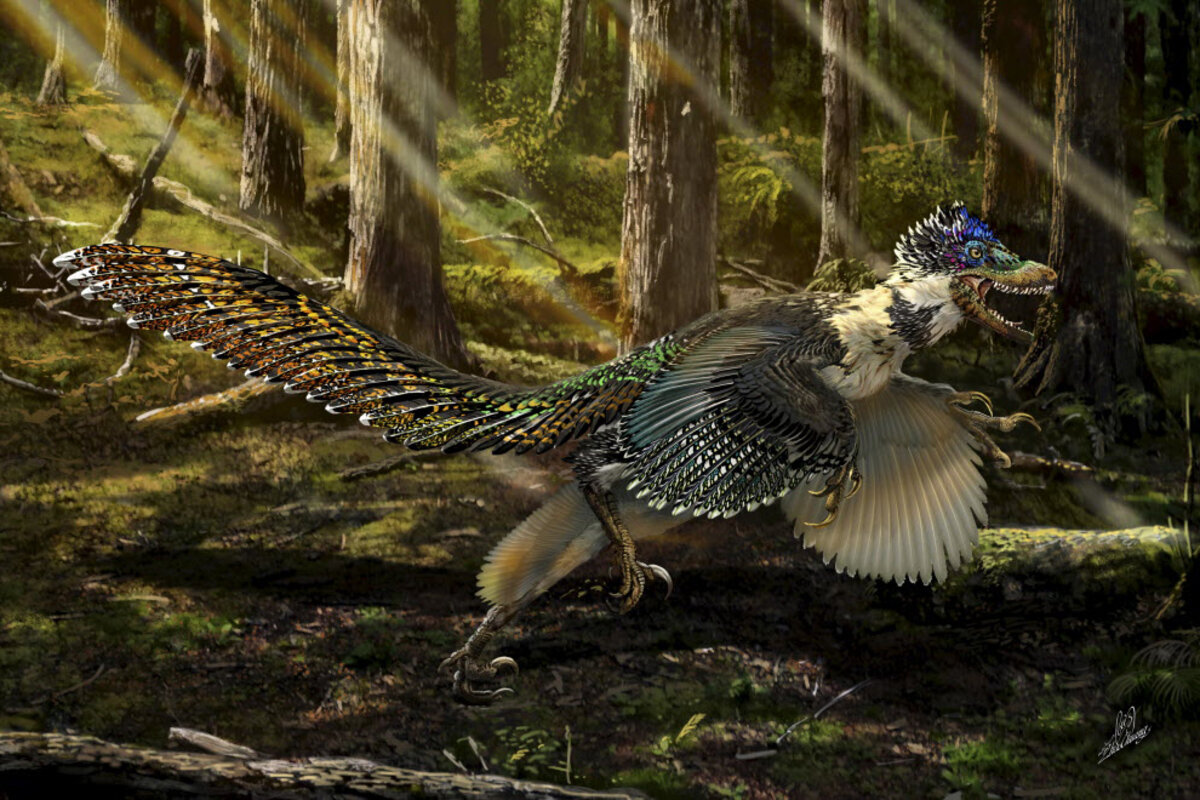Paleontologists discover 'fluffy feathered poodle from hell'
Loading...
Paleontologists recently unearthed an almost-perfectly preserved new dinosaur skeleton in northeastern China. This new dinosaur had wings and feathers and resembled a large bird with razor-sharp teeth, according to the report on Thursday.
The newly-discovered species, which University of Edinburgh paleontologist Steve Brusatte named Zhenyuanlong suni – or “fluffy feathered poodle from hell” – is, at 6-feet-long, the largest-known dinosaur with wings.
Zhenyuanlong falls into the carnivorous raptor family and is a cousin of the velociraptor, according to Dr. Brusatte, though that dinosaur lived about 40 or 50 million years later. This giant landbird lived around 125 million years ago, during the early Cretaceous Period.
Because of its size, Zhenyuanlong’s wings look as if they might belong to an eagle or vulture.
“Zhenyuanlong was a dinosaur that really looked like a bird,” Brusette, who collaborated with Chinese paleontologist Junchang Lü, told Reuters. “You wouldn't think of it differently than a turkey or an emu or a big chicken.”
These wings, however, were not used for flight.
“It's a fairly big raptor, and its arms are so short in proportion to its body,” Brusatte says. “I have a hard time believing that it could fly or glide or do anything in the air.”
Most likely, Brusatte says its wings were used similarly to those of peacocks: to attract mates and intimidate rivals. But this, Brusatte notes, raises further questions about the evolutionary function of wings.
“Did they evolve specifically for flight? In that case, Zhenyuanlong perhaps descended from a flying ancestor and that’s why it still has wings.” he says. “Or, alternatively, did wings first evolve for display or egg brooding or some other type of function, and then only in some dinosaurs were they later co-opted into airfoils for gliding and flying?”
Scientists have known for some time that feathers are not always directly linked to flight, , but the emergence of flightless dinosaurs with wings sheds new light on the evolutionary history of wings.
This report contains material from Reuters.





